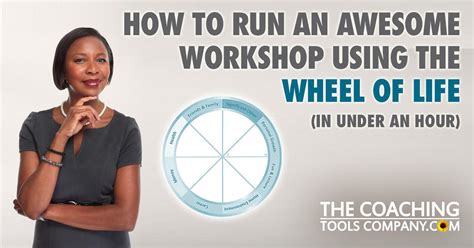In today’s fast-paced educational environment, having well-organized lecture notes and effective class reviews is crucial for academic success. Whether you’re a student striving to excel or a teacher aiming to enhance your teaching methods, understanding the importance of structured notes and comprehensive reviews can significantly boost your study outcomes. This guide will explore the best practices for taking lecture notes, how to effectively utilize class reviews for a deeper understanding, and compare various note-taking techniques. Additionally, we will highlight valuable resources that provide access to high-quality lecture notes and class reviews, ensuring you maximize your learning potential.
Dive deep into this topic alongside electrapk.com
1. Importance of Organized Lecture Notes
Organized lecture notes are the cornerstone of successful studying and academic achievement. Acting as a personalized resource, they capture essential information, key concepts, and insights shared during lectures. Well-organized notes make it easy for students to review and recall information, a crucial advantage during exam preparation. Furthermore, structured notes highlight patterns and connections between topics, fostering a deeper understanding of the subject matter. Organized notes also streamline the study process by reducing time spent searching for specific details, making study sessions more efficient. By maintaining clear and systematic notes, students are better equipped to keep up with course material, ultimately leading to improved academic performance and greater confidence in their knowledge.

2. Effective Methods for Taking Lecture Notes
Taking effective lecture notes is crucial for a successful learning experience. The Cornell Note-Taking System is a widely used method that divides your paper into three sections: cues, notes, and a summary. This structured format encourages active learning by prompting you to analyze the main points and synthesize them in your own words.
The Outline Method is another effective note-taking technique that employs a hierarchical structure. Main topics are listed, followed by their respective subtopics and supporting details. This method excels when dealing with subjects that possess a clear, organized framework.
The Mapping Method utilizes visual representations, like mind maps or diagrams, to organize information. This approach proves particularly effective for visual learners and for grasping complex concepts with interconnected ideas.
Finally, the Charting Method proves particularly useful for courses demanding the comparison and contrast of information. By structuring your notes in columns, you gain a clear visual representation of the relationships between diverse concepts.
By trying out different methods, you can discover the one that best aligns with your learning preferences. This will guarantee that your notes are not just complete but also customized to your individual requirements.

3. Utilizing Class Reviews for Better Understanding
Class reviews are a valuable tool for strengthening your grasp of course material. By revisiting the key ideas discussed in class and engaging in thoughtful reflection, you can reinforce your learning and pinpoint areas needing further exploration. A highly effective approach is to review your lecture notes soon after class, enabling you to bridge any gaps and solidify concepts while they are still fresh in your memory.
Group study sessions and discussion forums can boost your understanding. By comparing notes with classmates, engaging in discussions about different interpretations, and hearing new perspectives, you can gain valuable insights. The way others understand and explain concepts can significantly strengthen your grasp of the material.
Furthermore, reviewing supplemental materials, like recorded lectures or summaries, can enhance your comprehension of the course material. By consistently incorporating class reviews into your study schedule, you can ensure a deeper and more assured grasp of the subject matter, ultimately leading to improved academic outcomes.

4. Comparing Different Note-Taking Techniques
The selection of a note-taking technique significantly impacts learning efficiency, as each method offers unique advantages. The Cornell Note-Taking System stands out in fostering active learning and retention, making it an optimal choice for subjects that demand deep comprehension and frequent review. The Outline Method, with its clear, structured approach to information organization, proves particularly valuable in courses with hierarchical content, such as history or biology.
Visual learners will find the Mapping Method particularly helpful. This method allows you to visually grasp complex concepts by clearly illustrating the relationships between ideas. Alternatively, the Charting Method excels at comparing and contrasting information. This is especially useful for subjects like economics and sociology where understanding the connections between different factors is crucial.
By understanding the strengths of each note-taking technique, you can choose the best one for the subject matter and your personal learning preferences. This ensures your notes are both thorough and easy to review.
5. Resources for Accessing Quality Lecture Notes and Class Reviews
To solidify your understanding and ace your exams, accessing high-quality lecture notes and class reviews is essential. Thankfully, numerous online platforms provide valuable resources that complement your personal notes and offer diverse perspectives. Course Hero and Chegg are leading websites where students can find shared notes, study guides, and class reviews from their peers at various universities. These platforms also offer expert assistance for tricky topics, making them a dependable resource for challenging subjects.
Google Docs and Microsoft OneNote facilitate a collaborative learning environment by enabling students to create and share notes in real-time. This feature streamlines collaboration during class reviews and group study sessions. Additionally, these tools offer features such as tagging and search functions, enhancing the organization and retrieval of information.
Students have access to a wealth of resources beyond traditional textbooks. Many academic institutions provide their own online libraries and course management systems, such as Blackboard or Canvas, offering lecture slides, recorded lectures, and peer-reviewed notes. Furthermore, educational websites like Khan Academy and Coursera provide free or affordable access to lecture materials and class reviews for a vast array of subjects.
These resources can greatly improve your studying by offering diverse viewpoints and guaranteeing access to high-quality, well-structured notes and reviews.
Mastering the art of organized lecture notes and leveraging class reviews are key strategies for academic success. By adopting effective note-taking methods, such as the Cornell or Mapping techniques, and regularly reviewing class materials, students can deepen their understanding and retain information more effectively. Utilizing available resources, both online and within academic institutions, further enriches the learning experience by providing additional perspectives and support. Incorporating these practices into your study routine will not only enhance your academic performance but also build a strong foundation for lifelong learning and success.
electrapk.com
